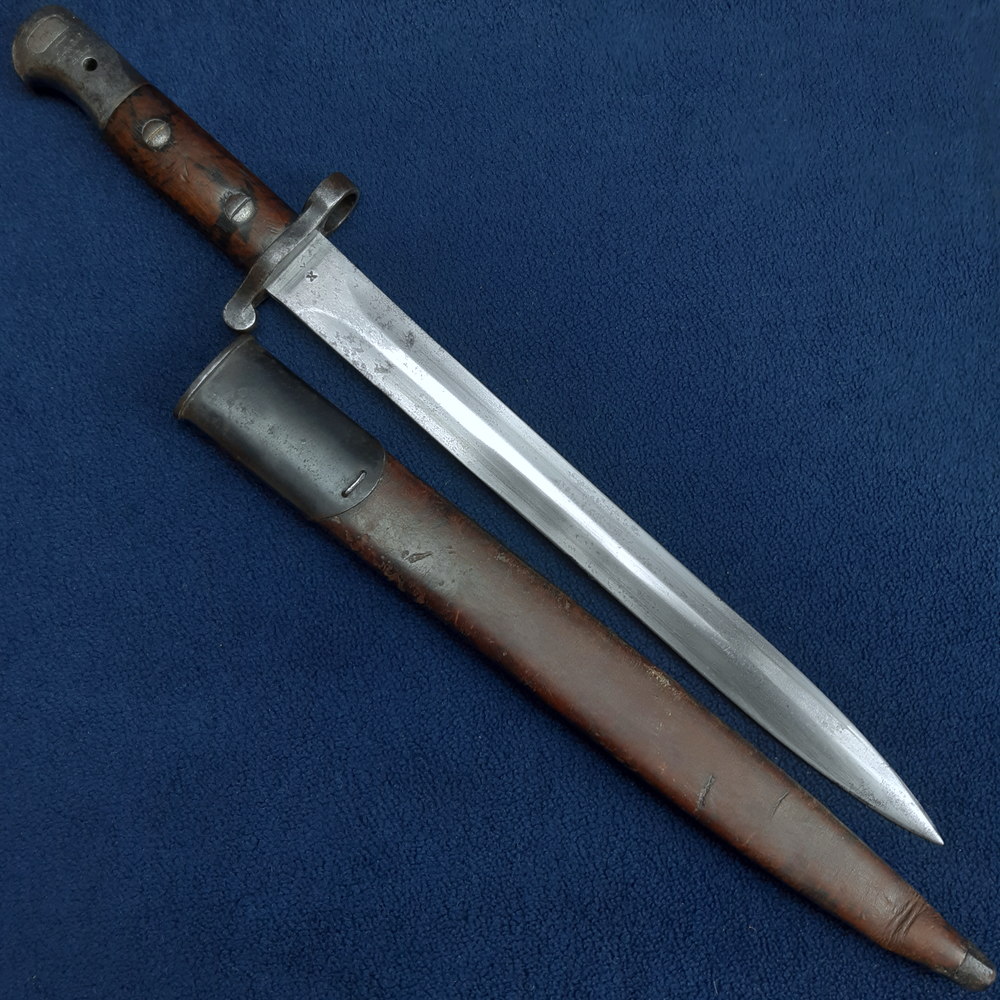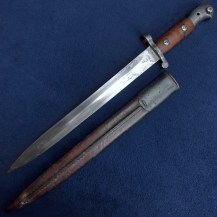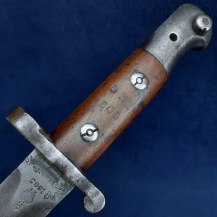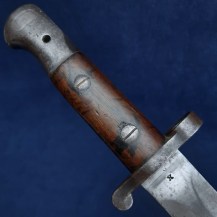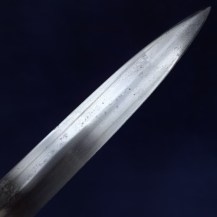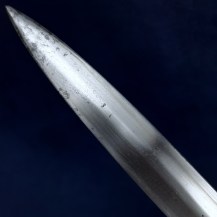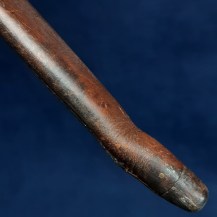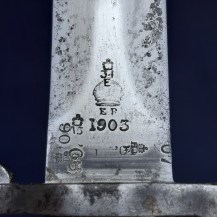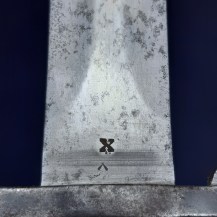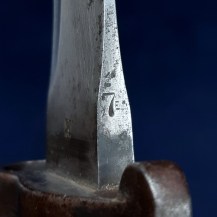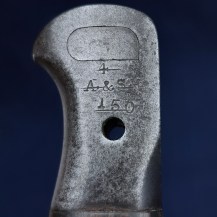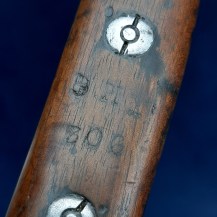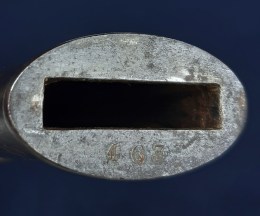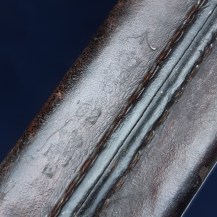British 1903 Pattern Bayonet, Argyll & Sutherland Highlanders and Denbighshire Hussars
Spear pointed unfullered blade, wood scale grips secured with two screws. Steel beaked pommel with locking button and clearance hole, steel hilt with short quillon and muzzle ring. Brown leather Land Mk II pattern scabbard with steel throat and leather chape.
The blade is stamped on one side of the ricasso with a crowned ‘E.R.’, and 1903 (the pattern), a production date of 1 ’01, meaning January 1901, three crown inspection marks with ‘E’ for Enfield and reissue stamps ’06, ‘07 and ’08. On the other side it is stamped with an ‘X’ which indicates that the blade passed a manufacturer’s bending test, and what looks like a second ‘X’ mark below it. The belly of the blade is stamped with ‘7’.
The pommel is stamped with ‘4’ over ‘A.&.S.H.’ over ‘150’. This indicates that this was bayonet number 150 used by the 4th Battalion, The Argyll & Sutherland Highlanders. This has been cancelled with strikethroughs.
The exposed tang is stamped with ‘T’. The wood grips are stamped on one side with another unit mark of ‘DHY’ over ‘300’, indicating the Denbighshire Hussars Yeomanry. The base of the pommel is stamped ‘EFD’ indicating manufacture at the Royal Small Arms Factory at Enfield. The throat piece of the scabbard is stamped at the mouth with ‘463’. The leather of the scabbard is stamped next to the seam with another broad arrow, two crown inspection stamps for Enfield and the manufacture date ’02.
The manufacture date predating 1903 indicates that this is one of the 1903 bayonets produced at Enfield by converting previous patterns which used the same blade, in this case the 1888 Mk II bayonet. Its original maker’s mark has been removed due to refinishing and remarking of the blade in this process, while part of the original bending test ‘X’ mark can still be seen next to the new one. Its Mk II Land Pattern scabbard, originally for the 1881 Pattern bayonet, could also be reused as it was fully compatible with the 1903 Pattern.
The two unit marks on this example show its service history – initially issued to the Argyll & Sutherland Highlanders it was later passed on to the Denbighshire Hussars Yeomanry. Older models of equipment were often passed on after they were replaced, usually handed down from regular units to support or volunteer units.
The 1903 Pattern bayonet had quite a short service life with the SMLE rifle: it was judged to be too short compared to other armies’ bayonets which would be a disadvantage in bayonet combat, so the 1907 Pattern was designed and produced in much larger quantities to replace it. As a regular infantry unit the Argylls were probably issued with the 1907 Pattern quickly so their 1903s would have been surplus and in good condition, while the Denbighshires were at that time a mounted infantry unit that might well have preferred the shorter, lighter 1903 pattern for their SMLEs.
The blade is bright with patches of cleaned pitting at the forte and near the tip, and polishing marks overall with no edge damage. The ricasso of the blade retains its original band of bluing, slightly rubbed. The hilt, exposed tang and pommel also have a blued finish, with some wear revealing lightly patinated steel. The scabbard throat piece is likewise blued bright with spots of patination. The wood grips have light handling wear, a few small dents and areas of staining. The scabbard leather has some dents and rubbing wear, all of its stitching is intact. The chape end of the scabbard is slightly kinked (common on this type), but this does not interfere with sheathing and drawing.

